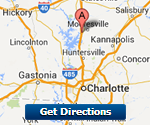Electronic Fuel Injection Cleaning
One of the greatest things to ever occur in the automotive world was the invention of computer controlled electronic fuel injection (EFI) systems for passenger cars and light trucks. While many automotive technicians and car owners are intimidated by the possibility of diagnosing, repairing, and even maintaining these complex fuel delivery systems.
Modern OBD-II computerized engine control and fuel delivery systems can communicate with technicians, making us aware of conditions which are beyond our field of vision and analyze failure data which occurred in a fraction of an instant, hours, days, and even months prior.
The key to getting a clear understanding of what makes the electronic fuel injection system operate is gaining a degree of familiarity with the basic components.
The Powertrain Control Module (PCM) could be best described as the “brain” of the EFI system. It utilizes data drawn from sensors in the engine, exhaust, transmission, and fuel tank to determine the amperage necessary to accomplish a duty cycle pulse width suitable for delivery of the optimum amount of fuel required. This can be measured on a per cylinder basis, or for any equal combination of cylinders. For instance; a throttle body injection system utilizes two total fuel injectors positioned near the center of the intake manifold. Fuel is delivered to the right engine bank from one fuel injector and engine bank 2 receives fuel from the second injector. Multi-port fuel injection systems deliver fuel into the intake passages of individual cylinders and direct fuel injection systems deliver fuel directly into the combustion chamber of each individual cylinder. Mass air flow, exhaust oxygen content, engine temperature, manifold air pressure, intake air temperature, and throttle position, as well as camshaft and crankshaft angle are all included as factors in determining quantity and timing of fuel delivery.
Most modern fuel injection systems utilize a pulsing ground signal system. Once the ignition is turned to the on position, constant voltage is applied to the fuel injectors. When the engine is running, fuel injectors receive a ground pulse signal from the PCM. The combination of steady voltage and a ground pulse, supplied at precisely the correct time, causes the fuel injector to emit a patterned spray of fuel into the appropriate cylinder at the appropriate second.
The fuel injector, which delivers the actual spray of gasoline, is typically mounted in the throttle body housing or a fuel rail. It is supplied with pressurized gasoline by the fuel pump. The injector is a pressurized solenoid which is fitted with two electrical poles that complete an electrical circuit and open the injector, creating a spray effect with the pressurized gasoline being emitted from the tip. The tip is inserted into the intake manifold, combustion chamber, or throttle body, depending upon design.
The fuel pump is normally located in the fuel tank. It is also electrically operated, controlled by the PCM and a fuel pump relay. It runs constantly with the engine cranked and supplies fuel at varying degrees of pressure to the injectors. The degree of pressure that the injectors receive is determined primarily using an inline fuel pressure regulator. Between the fuel pump and the injectors there is often an inline fuel filter to trap excessive amounts of debris from dirty fuel.
For questions regarding your EFI vehicle, contact Race City Injector.






